IBM Infoprint Color 1220 (4920-001, N01, DN1)
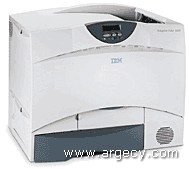
Looking for IBM Infoprint 1220 Parts?
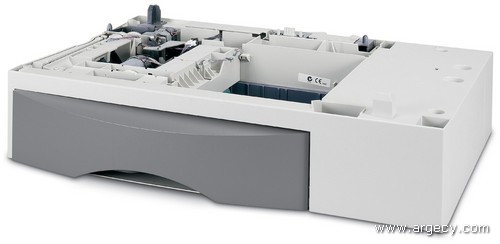 53p9320 500-Sheet Drawer | |
| 53p9321 500-Sheet Tray | |
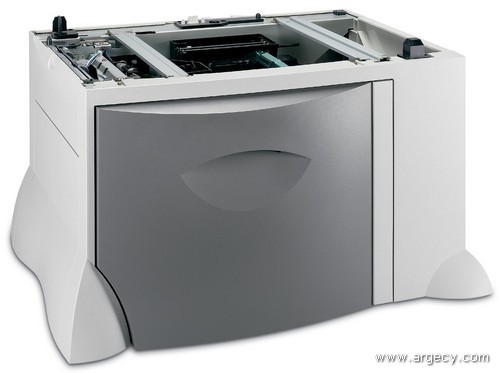 53p9322 2000-Sheet Drawer | |
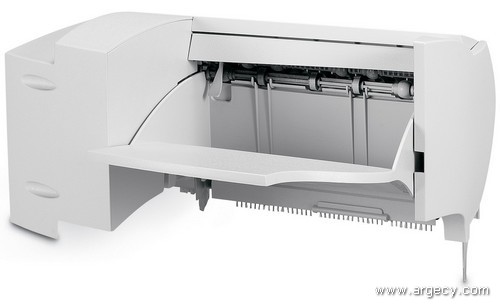 53p9324 Output Expander | |
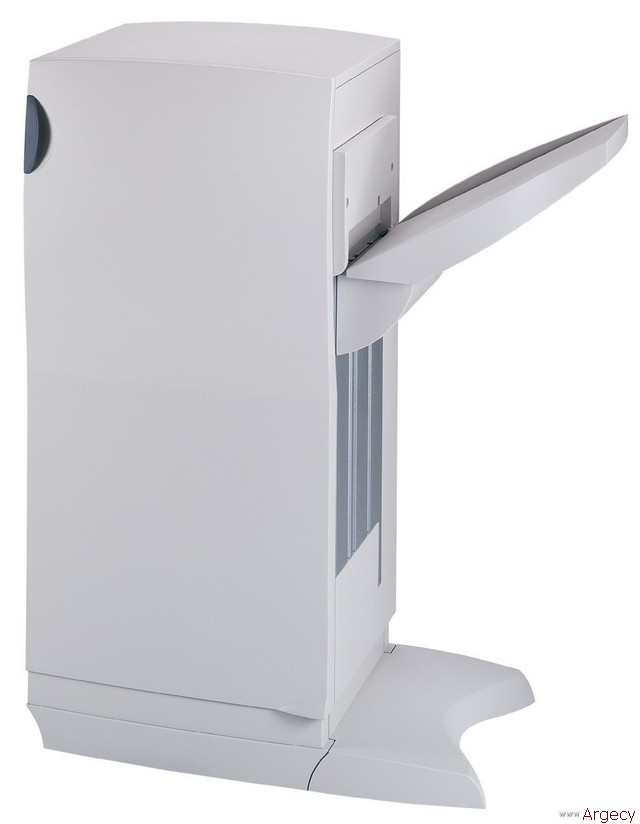 53p9326 Color 1220 Finisher S | |
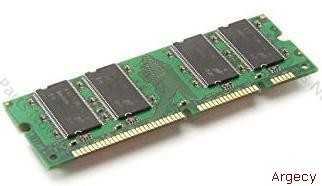 53p9328 64 MB memory DIMM | |
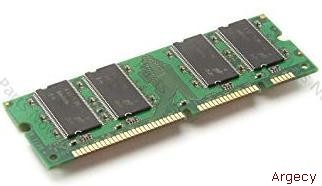 53p9329 128 MB memory DIMM | |
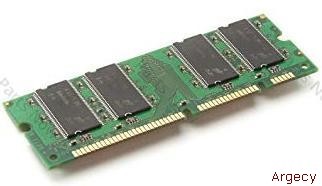 53p9330 256 MB memory DIMM | |
53P9331 4 MB flash SIMM | |
53P9332 8 MB flash SIMM | |
53P9333 16 MB flash SIMM | |
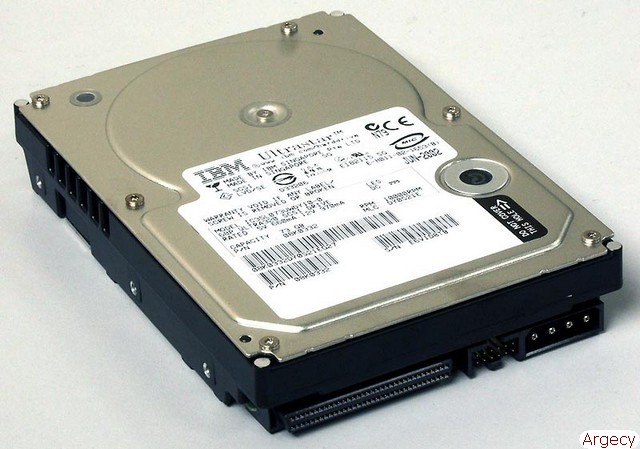 53P9338 5+GB ISP Hard Disk w/Adapter | |
53P9341 Optra Forms 8MB Flash DIMM | 53P9341 Optra Forms**8 MB Flash DIMM New 53P9341 (New) Retired, no longer available: Contact for alternatives |
53P9340 Optra Forms 4MB Flash DIMM | 53P9340 Optra Forms**4 MB Flash DIMM New 53P9340 (New) Retired, no longer available: Contact for alternatives |
53P9342 Optra Forms 16MB Flash DIMM | 53P9342 Optra Forms**16 MB Flash DIMM New 53P9342 (New) Retired, no longer available: Contact for alternatives |
53P9343 Optra Forms Hard Disk w/Adapt | 53P9343 Optra Forms**Hard Disk w/Adapt New 53P9343 (New) Retired, no longer available: Contact for alternatives |
| 53P9307 Optra Forms Manager | |
53P9587 Card for IPDS & SCS/TNe | |
53P9588 ImageQuick Card | |
| 53P9585 Parallel Card and C-B Adapter | |
53P9344 Fiber Print Server SC | |
 | |
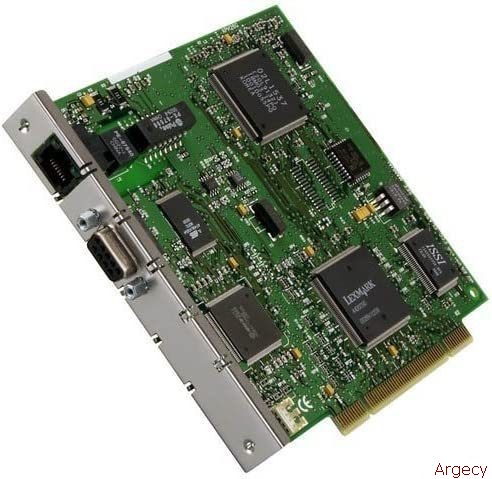 53P9584 Parallel 1284 C-B Adapter | |
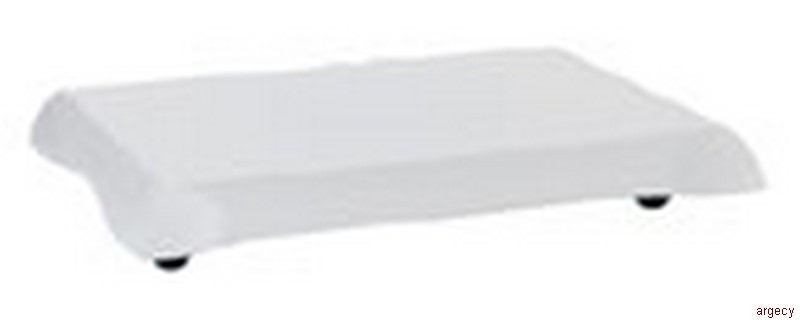 53p9355 Color 1220 Printer Stand | |
28P1842 Twinax/Coax Adapter for SCS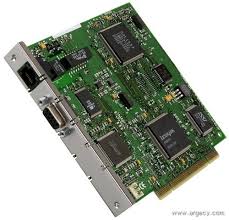 | |
| 28p1862 Optra Forms Software | 28P1862 Optra Forms Software New 28P1862 (New) Retired, no longer available: Contact for alternatives |
| 28p1863 Optra Forms Director Software | 28P1863 Optra Forms Director Software New 28P1863 (New) Retired, no longer available: Contact for alternatives |
| 28p1869 Optra Forms 2-Key Security | |
| 28p1870 Optra Forms 3-Key Security | |
28P1835 Token-Ring | 28P1835 Token Ring Fully refurbished with 90-day warranty 28P1835 Retired, no longer available: Contact for alternatives |
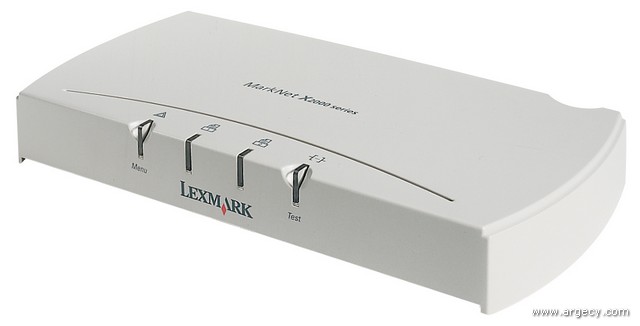 28p1836 Token-Ring-3 port | |
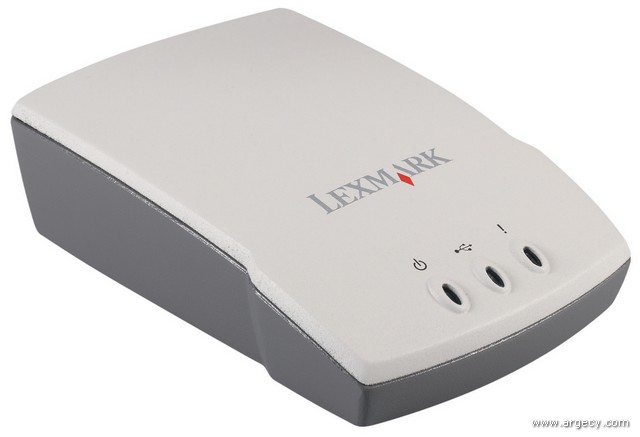 28p1839 Ethernet 10/100BaseTX-1 port | |
28P1837 Ethernet 10BaseT/2 | |
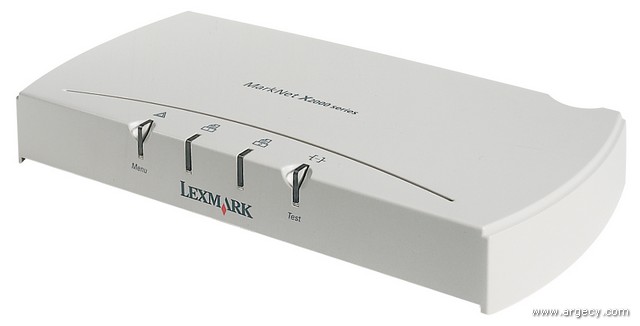 28p1840 10/100BaseTX-3 port | |
28p1841 Ethernet 10/100TX/10Base2-1 pt  | |
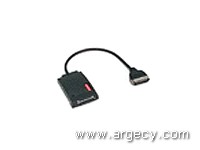 28p1845 External Serial Adapter | |
28P1843 Tri-Port Adapter | |
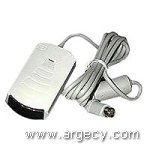 28p1844 Infrared Adapter | |
28p1846 RS-232-C Serial/Parallel 1284-C | |
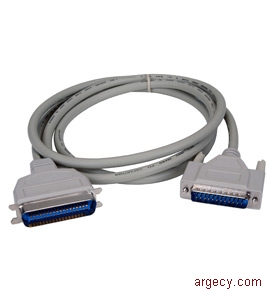 28p1871 10 ft. Parallel Cable | |
| 28p1872 20 ft. Parallel Cable | |
| 28p1874 50 ft. Serial Cable | |
 28p1873 Parallel 1284-C Cable 6 ft. | |
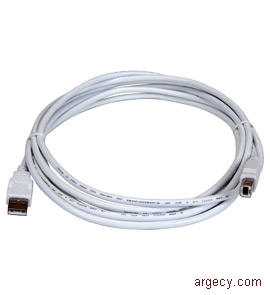 28p1875 2-meter USB Cable | |
| Supplies | |
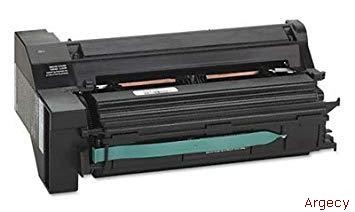 53P9356 Black Print cartridge | |
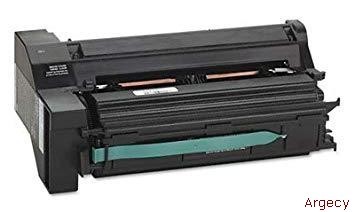 53P9357 Cyan Print cartridge | |
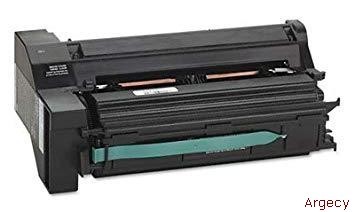 53P9358 Magenta Print cartridge | |
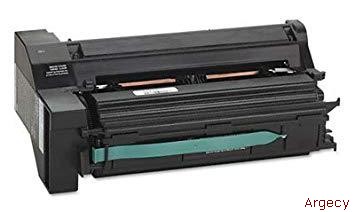 53P9359 Yellow Print cartridge | |
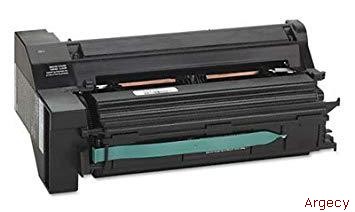 53P9360 Black High Yield Print cart. | 53P9360 IBM Infoprint Color 1220 1222 Series Black Toner Cartridge New 53P9360 15K Yield Compatible (New) $171.00 |
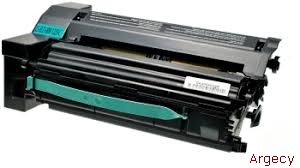 53P9361 Cyan High Yield Print cart. | 53P9361 IBM InfoPrint Color 1220 1222 Series Cyan Toner Cartridge New 53P9361 15K Yield Compatible (New) $266.00 |
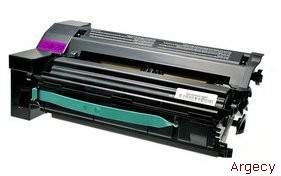 53P9362 Magenta High Yield Print cart | 53P9362 IBM InfoPrint Color 1220 1222 Series Magenta Toner Cartridge New 53P9362 15K Yield Compatible (New) $266.00 |
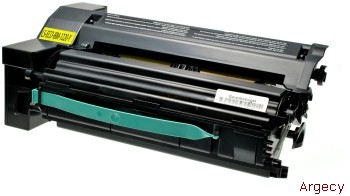 53P9363 Yellow High Yield Print cart | 53P9363 IBM InfoPrint Color 1220 1222 Series Yellow Toner Cartridge New 53P9363 15K Yield Compatible (New) $266.00 |
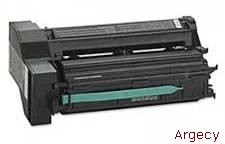 53P9364 Black Use & Return Print cart | |
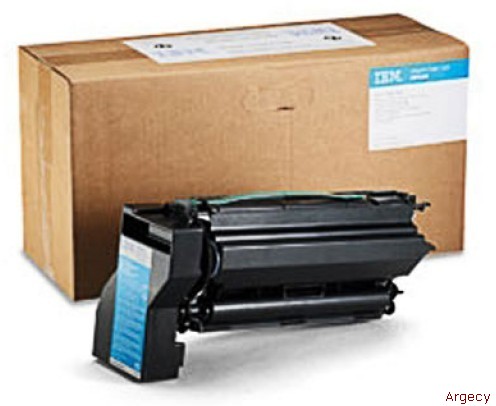 53P9365 Cyan Use & Return Print cart | |
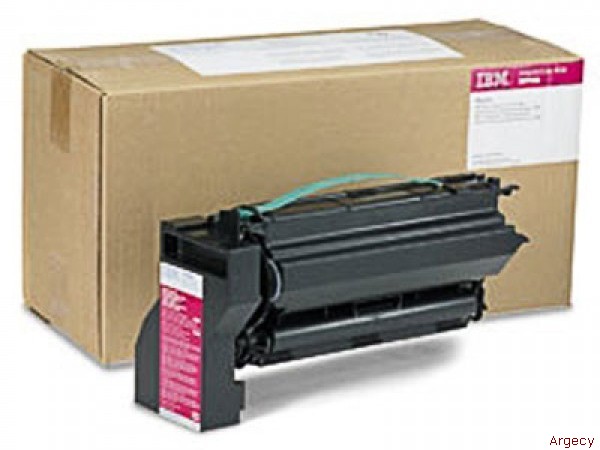 53P9366 Magenta Use & Retrn Print cart | |
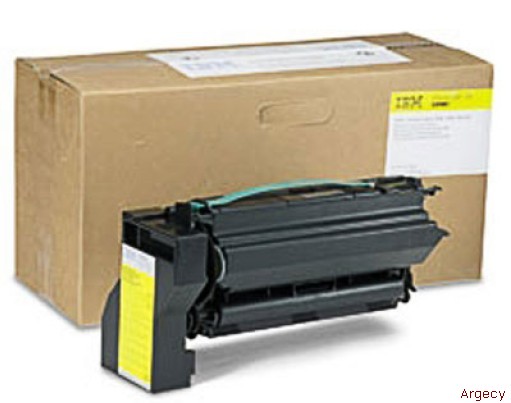 53P9367 Yellow Use & Return Print cart | |
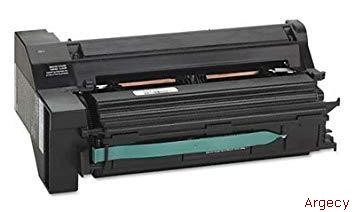 53P9368 Black Use & Return /HiYld cart | |
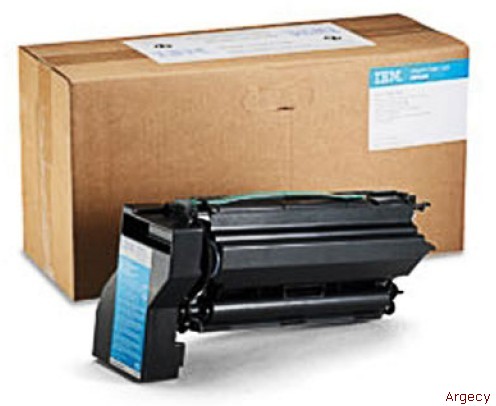 53P9369 Cyan Use & Return HiYld cart | |
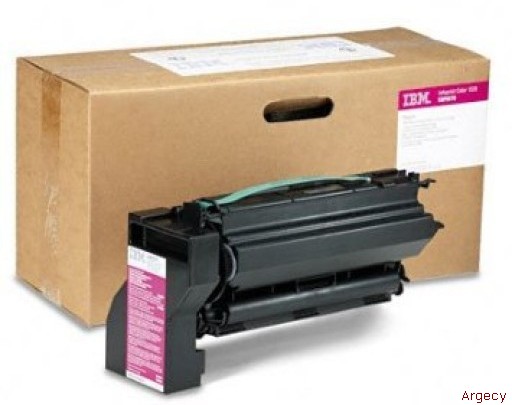 53P9370 Magenta Use & Return /HiYld cart | |
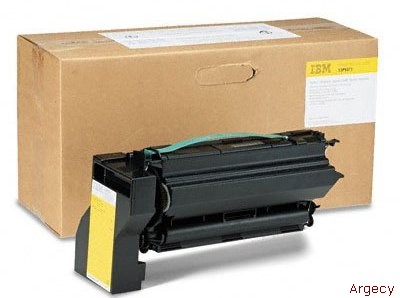 53P9371 Yellow Use & Return /HiYld cart | |
 53P9372 Toner Waste Container | |
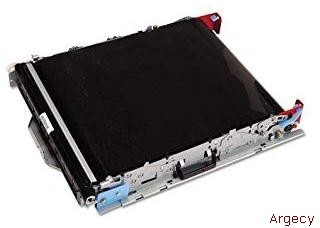 53P9373 Maint. Kit w/2nd tranfer roll (ITU) | |
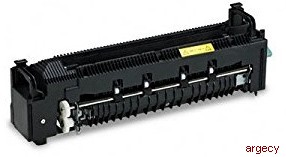 53P9374 Fuser Maintenance Kit LV | |
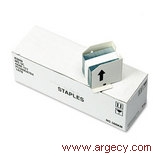 28P2019 Staple Cartridges |
4920 IBM Infoprint Color 1220 High Performance Laser Printer
The IBM 4920 Infoprint Color 1220 Model DN1 is a low-voltage color printer with a 350 MHz PMC-Sierra RM7000A processor, 100 MHz internal data bus, 128 MB SDRAM, duplex, 10/100BaseTX Fast Ethernet, print speeds of up to 20 pages per minute, 250-sheet standard output capacity, and language support.
The IBM 4920 Infoprint Color 1220 Model 001 is a low voltage color laser printer with a 350 MHz PMC-Sierra RM7000A processor, 100 MHz internal data bus, 128 MB SDRAM, duplex, 10/100BaseTX Fast Ethernet, print speeds of up to 20 pages per minute, 250-sheet standard output capacity, and language support.
The IBM 4920 Infoprint Color 1220 Model N01 is a low voltage network color laser printer with a 350 MHz PMC-Sierra RM7000A processor, 100 MHz internal data bus, 128 MB SDRAM, duplex, 10/100BaseTX Fast Ethernet, print speeds of up to 20 pages per minute, 250-sheet standard output capacity, and language support.
The Infoprint Color 1220 is a superior value workgroup color laser printer that delivers excellent performance and reliability. Two DN models enhance that value with 128 MB of memory, duplex, and networking capability as standard. The Infoprint Color 1220 provides the following benefits:
- Up to 20 pages-per-minute (PPM) print speed in both monochrome and color
- Outstanding print quality with 1200 x 1200 dots-per-inch (dpi)
- Broad range of paper handling options available
- PCL 6 and PostScript Level 3 standard
- Robust printer management software available
The IBM Infoprint Color 1220 offers a high-quality, medium-volume color printing solution for small workgroup environments.
The Infoprint Color 1220 provides:
- High-performance controller technology utilizing a 350 MHz RISC processor
- 512 MB maximum memory
- Three levels of monochrome and color toner savings
- Automatic color correction
- Optional finisher with stapling, hole punching, and job offsetting
- Robust driver support including Linux
The Infoprint Color 1220 comes with a one-year on-site repair warranty, which provides quick service if needed.
Infoprint Color 1220 DN Models
The Infoprint Color 1220 printer has two DN models; both come with 128 MB of memory, duplex, and a 10/100BaseTX Fast Ethernet card as standard. The low-voltage model is DN1 and the high-voltage model is DN2.
The IBM Infoprint Color 1220 is an A4/letter color laser printer with print speeds of up to 20 pages per minute (PPM).
Infoprint Color 1220 media handling capabilities include:
- Optional three 500-sheet drawers or one 500-sheet drawer and one 2,000-sheet drawer for a maximum 3,100 sheets input capacity.
- 250-sheet standard output capacity and 3,900 maximum output capacity with optional features installed.
- Optional 650-sheet Output Expander and 5-Bin Mailbox.
- Optional 3,000-sheet finishers (Finisher S and Finisher T) with stapling, punching and offsetting. It requires the duplex unit, one 500-sheet drawer and the 2,000-sheet drawer as prerequisites. The finisher comes in two versions:
- Finisher S (Short) for printers without the 2,000-sheet drawer
- Finisher T (Tall) for printers with the 2,000-sheet drawer
Usage Rates
The maximum monthly usage is 60,000 impressions. IBM does not recommend printing to the monthly maximum on a consistent basis.
High-Performance Controller
The Infoprint Color 1220 controller features a 350 MHz PMC-Sierra RM7000A processor and 100 MHz internal data bus. It is equipped with robust data stream support with PostScript 3 emulation and PCL 6 emulation standard.
- Memory
The DN printer models have 128 MB SDRAM standard. (64 MB soldered on the controller board and a 64 MB memory DIMM). The controller supports a maximum of 512 MB of SDRAM memory. This is done using two 256 MB memory DIMMs and the 64 MB onboard is not used. There are two slots available for SDRAM memory and flash memory. A maximum of 16 MB of optional flash memory is supported.
- Printer System Attachment Interfaces:
- Universal serial bus (USB) and integrated 10/100BaseTX Fast Ethernet interface (standard on DN models).
- Optional features are available for other network connections.
Print Quality
The Infoprint Color 1220 supports the following resolutions:
- 2400IQ (1200 dpi like) default resolution out-of-box (full printer speed)
- True 1200 x 1200 dpi (one half printer speed)
The Toner Darkness setting offers you five selectable levels with level 5 being the darkest. This allows you to conserve toner by selecting the darkest settings only when needed. Level 4 is the default setting. Printing in color level 5 is equal to level 4. The printer offers up to 50% toner savings, thus reducing the cost of printing.
The "Toner Darkness" menu is available through the operator panel under the Print Quality menu and also accessible through the Infoprint Color 1220 PostScript Driver.
Font Support
The printer's resident fonts include support for following:
Emulation Number of Scalable Fonts Number of Bitmapped Fonts
------------ ------------------------ -------------------------
PCL 6 84 2
PostScript 2 156 0
Accessibility by People with Disabilities
Section 508 of the U.S. Rehabilitation Act
For Hardware Offerings
The following features support use by people with disabilities:
- Controls and latches operable with one hand and minimal dexterity.
- Keys are discernible by touch without activating them.
- The display, controls, latches, and levers are accessible to someone in a wheel chair.
- Color is used as an enhancement for conveying information, and as an additional method of distinguishing between buttons, controls, and latches.
Model SDRAM Voltage Duplex Ethernet
----- ------ ------- ------ ------------
DN1 128 MB Low Yes 10/100BaseTX
Customer Setup (CSU)
All printer features are customer installable.
Devices SupportedNone.
Model ConversionsPerformance Specifications
The Infoprint Color 1220 maximum print speeds are shown in the following table. Actual performance depends on:
Interface to the host (serial, parallel, network)
Host system and application
Network complexity and traffic
Page complexity and content
Certain printer options installed and selected
Printer memory
Printer resolution
Media size, media type setting and tray source
1200 x 1200
Media 2400 IQ dpi
------------------ -------- -----------
Simplex Printing
Letter 20.0 ppm 10.0 ppm
A4 19.0 ppm 9.5 ppm
Legal 16.2 ppm 8.1 ppm
Duplex Printing
Letter 20.0 ipm 10.0 ipm
A4 19.0 ipm 9.5 ipm
Legal 16.2 ipm 8.1 ipm
dpi = dots per inch
ppm = pages per minute
ipm = impressions per minute
IQ = Image Quality resolution
First Copy(1) Times are shown in the following table.
Printer Mode Time (seconds)
---------------- --------------
From Standby
Monochrome <17.5
Color <20.0
From Power Saver
Monochrome <180.0
Color <180.0
Note:(1) First Copy time is defined as the elapsed time when hitting enter on the PC to the page exiting to the output bin. Paper is picked from the primary tray and paper exits to the primary output bin. Media is letter size paper printed in 300 and 600 dpi simplex printing.
Print Area
The Infoprint Color 1220 printable area is limited to within 4.2 mm (0.167 in.) of top, bottom, left or right edges of the media. Any information placed outside this specified printable area will not print.
Print Quality
General Statement on Print Quality
During the life of the printer, components are subject to wear based on usage. Printers continuously operating at or near the maximum duty cycle may require service for replacement of these components to ensure high quality printing and good performance throughout the life of the printer.
Customer-replaceable maintenance items are recommended every 150,000 pages for the fuser and 105,000 pages for the ITU.
Automatic Calibration
The Infoprint Color 1220 performs an automatic calibration under the following conditions:
- At power on
- After 8 hours of Power Saver
- Every 500 pages
- After changing a print cartridge
- After changing an intermediate transfer unit
A manual calibration can be initiated by selecting "Color Adjust" from the Utilities Menu.
Color and Black and White Printer Controls
The Infoprint Color 1220 will offer several controls that will allow the user or Printer / Network Administrator to direct the preferred output to be color or black and white.
Driver
A choice to print a color job in black and white is available in Infoprint Color 1220 Drivers. Printing jobs in color is the default setting.
Op Panel
Print Mode
Allows users not utilizing an Infoprint Color 1220 Driver to print a color job in black and white by selecting Black and White from the menu. The selections are color (default setting) and black and white. "Print Mode" is located under the Color Menu. These Op panel selections are ignored when using an Infoprint Color 1220 PostScript or PCL Driver for Windows.
Printer Usage
Printer Usage modes are set to control the starting position of the Intermediate Transfer Unit (ITU) and how the printer software controls its position depending on the color content of the print job and/or the Infoprint Color 1220 Driver or "Print Mode" selection (this applies only to simplex printing, the ITU stays engaged during duplex). There are two selections: Max Speed and Max Yield (default setting). "Printer Usage" is located under the Setup Menu.
Processing a significant number of black pages with the ITU engaged may reduce the life of the color photoconductors and may affect the ultimate life of the color print cartridges (the photoconductor is an integral part of the cartridge).
Maximum print speed is obtained when the Driver and Print Mode are set to color (default settings) and Printer Usage is set to Max Speed. Any other selections can reduce throughput depending on the job content and the selection. It takes approximately one second to lower the ITU and approximately six seconds to raise it. The following table summarizes the effect of selections on the ITU movement.
Driver or
"Printer Usage" "Print Mode" ITU Initial
Selection Selection Position ITU Movements
--------------- ------------ -------------- ---------------------
Max Speed Color Raised/Engaged Stays Raised
Monochrome Raised/Engaged Lowers after 3rd page
Max Yield Color Raised/Engaged Lowers after 3rd
black page, raises
for a page with color
content repeats cycle
Monochrome Raised/Engaged Lowers after 3rd page
Black and White Lock
This feature allows Printer/Network Administrators to "lock" the Infoprint Color 1220 printer in a mode that will only print black and white with the ITU disengaged. This feature can not be overridden with any other menu or driver selection. "Black and White Lock" is located under the Configuration Menu.
Color Correction Settings
The Infoprint Color 1220 will offer the following color correction settings:
Auto (Default): Applies different color correction to each object on the printed page depending upon the type of object and how the color for each object is specified.
Vivid: Applies a color correction algorithm that produces brighter, more saturated colors.
Off: No color correction is implemented.
CMYK: Applies color correction to approximate SWOP R color output.
Display: Applies color correction to approximate the colors on a computer display.
Manual: Allows users to customize color correction output from the Op Panel. Setting selectable from the Driver.
"Auto/default" Color Correction Setting
Incoming Color Format Color Correction Output
--------------------- -----------------------
RGB Graphics sRGB Vivid
RGB Image sRGB Display
RGB Text sRGB Vivid
CMYK Graphics US CMYK
CMYK Image US CMYK
CMYK Text US CMYK
US CMYK
"Manual" Color Correction Output Op Panel Selections
Incoming Color Correction
Color Format Default Output Selections Other
---------------- ---------------- ----------------------------
RGB Graphics sRGB Vivid Vivid, sRGB Display, RGB Off
RGB Image sRGB Display sRGB Vivid, Vivid, RGB Off
RGB Text sRGB Vivid Vivid, SRGB Display, RGB Off
CMYK Graphics CMYK (1) Vivid CMYK, Vivid, CMYK Off
CMYK Image CMYK (1) Vivid CMYK, Vivid, CMYK Off
CMYK Text CMYK (1) Vivid CMYK, Vivid, CMYK Off
Note:(1) US CMYK is defaultrt for low volt printers, Euro CMYK is default for high volt printers
"Manual" Color Correction Output Selection Definitions
Vivid: Applies a color correction algorithm that produces brighter, more saturated colors. May be selected for all incoming color formats.
sRGB Display: Applies color correction to produce output that approximates the colors displayed on a computer monitor.
sRGB Vivid: Increased color saturation for the sRGB Display color correction.
RGB Off: No color correction is implemented.
US CMYK: Applies color correction to approximate SWOP R color output.
Vivid CMYK: Increased color saturation for the US CMYK color correction.
CMYK Off: No color correction is implemented.
Euro CMYK: Applies color correction to approximate EuroScale color output
Data Streams
The Infoprint Color 1220 supports the following data streams:
- PostScript Level 3 Emulation
- PCL 6 Emulation
Fonts
Fonts and Symbol Sets
There are 83 symbol sets in the PCL 6 emulation to support all the languages that use these characters. The symbol set names are listed below. Not all symbol sets are supported by all fonts. Refer to the Technical Reference manual or use the printer operator panel to find which symbol sets are supported by each font.
The Infoprint Color 1220 will have UTF-8 code support standard. UTF-8 code is a particular way in which fonts are accessed. UTF-8 code is a particular way in which fonts are accessed. UTF-8 is available for PCL and PostScript fonts.
The fonts in the PCL emulation are compatible with the fonts in the HP4500** and include four additional fonts and many extra symbol sets to support extra languages and applications. The fonts in the PostScript emulation are compatible with Adobe PostScript 3 and include 20 additional fonts above and beyond the Adobe PostScript 3 fonts.
Additional fonts can be downloaded to the printer RAM or optional Flash DIMM or Hard Disk. PCL emulation supports both scalable and bitmapped downloadable fonts. PostScript emulation supports only downloadable scalable fonts, and PPDS emulation supports only downloadable bitmapped fonts. Font cards and font cartridges are not supported.
Included on the CD-ROM shipped with the printer are a variety of downloadable fonts for Hebrew and Arabic and additional support for the Euro currency character.
Also included on the CD-ROM is the FontVision Font Management utility and screen fonts to match the resident scalable fonts.
PostScript 3 Fonts
Note:Font order is partially alphabetical and partially functional.
PostScript 3 Font Names (156 scalable fonts):
AlbertusMT | Helvetica-Light | Optima |
|
PCL 6 Fonts
Note:Font order is partially alphabetical and partially functional.
PCL 6 Font Names (84 scalable fonts):
Albertus Medium | CG Times |
Symbol Sets
Symbol Set Names:
BICOMP Brazil/Portugal | Windows 98 Cyrillic |
Note:Not all fonts support all of the symbol sets. Refer to the Technical Reference manual for your specific printer or use your printer operator panel to find which symbol sets are supported by each font.
Media Support
All models come standard with one 500-sheet paper drawer and one 100-sheet auxiliary tray. One 250-sheet output bin is standard. See tables below for standard and maximum media capacities.
Input Media Capacities (Sheets)
TotalNote:(1) Maximum combination using 500-sheet drawers.
Aux. Tray Drawer 1 Drawer 2 Drawer 3 Drawer 4 Capacity
--------- -------- -------- -------- -------- --------
Standard 100 500 600
Maximum(1) 100 500 500 500 500 2100
Maximum(2) 100 500 500 2000 3100
Note:(2) Maximum combination with 2,000-sheet drawer. An optional 500-sheet drawer is required when utilizing a 2,000-sheet drawer and a duplex unit. Only one 500-sheet drawer is allowed with the 2,000-sheet drawer.
Output Media Capacities (Sheets)
Optional OptionalNote:(1) Maximum of one Output Expanders can be installed.
Standard Output 5-Bin Optional Total
Output Bin Expander Mailbox Finisher Capacity
---------- -------- -------- -------- --------
Standard 250 250
Maximum with 250 650 900
Output Expander(1)
Maximum with 250 500 750
5-bin Mailbox 2)
Maximum with 250 650 3000 3900
Finisher and
Output Expander(3)
Maximum with 250 500 3000 3750
Finisher and
5-bin Mailbox(3)
Note:(2) Maximum of one 5-bin Mailboxes can be installed.
Note:(3) Maximum of one Finisher and either one Output Expander or 5-bin Mailbox can be installed.
Media Sizes Supported
Input Media
500- 2000-
Aux. Sheet Sheet
Paper Size & Type Tray Drawer Drawer Duplex
------------------------ ---- ------ ------ ------
A4 (210x297 mm) Yes Yes Yes Yes
Letter (8.5"x11"] Yes Yes Yes Yes
A5 (148x210 mm) Yes Yes Yes Yes
B5-JIS (182x257 mm) Yes Yes Yes Yes
Legal (8.5"x14"] Yes Yes Yes Yes
Executive (7.25"x10.5"] Yes Yes Yes Yes
Folio (8.5"x13"] Yes Yes No Yes
Statement (5.5"x8.5"] Yes Yes No Yes
7 3/4 Env. (98x191 mm) Yes No No No
9 Env. (98x225 mm) Yes No No No
Commercial #10 Env. Yes No No No
(104.8x241.3 mm)
C5 Env. (169x229 mm) Yes No No No
B5 Env. (176x250 mm) Yes No No No
DL Env. (110x220 mm) Yes No No No
Other Env.(1) Yes No No No
Universal(2) Yes Yes No Yes
Universal(3) Yes No No No
Universal(4) Yes Yes No Yes
Paper Yes Yes Yes Yes
Transparencies Yes Yes No No
Cardstock Yes Yes No Yes
Vinyl Labels Yes Yes No No
Paper Labels Yes Yes No Yes
Polyester Labels Yes Yes No No
Dual Web Labels Yes Yes No Yes
Integrated Labels Yes Yes No Yes
Note:(1) Size 98.4x162mm to 176x250mm (3.87x6.38 in. to 6.93x9.84 in.).
Note:(2) Size 139.7x210mm to 215x355.6mm (5.5x8.27 in. to 8.5x14 in.).
Note:(3) Size 69.85x127mm to 229x355.6mm (2.75x5 in. to 9.01x14 in.). 250-sheet Universal tray does not support index cards. 400-sheet Universal tray supports paper no shorter than 7 in.
Note:(4) Size 148x182mm to 215.9x355.6mm (5.83x7.17 in. to 8.5x14 in.)
Output Media
Std Fin. Fin. Fin.
Out. 5-bin Output Staple Job Output
Paper Size & Type Bin Mailbox Expand /Punch Offset Bin
----------------------- ---- ------- ------ ------ ------ ------
A4 (210x297 mm) Yes Yes Yes Yes Yes Yes
Letter (8.5"x11"] Yes Yes Yes Yes Yes Yes
A5 (148x210 mm) Yes No Yes Yes Yes Yes
B5-JIS (182x257 mm) Yes Yes Yes Yes Yes Yes
Legal (8.5"x14"] Yes Yes Yes Yes Yes Yes
Executive (7.25"x10.5"] Yes Yes Yes Yes Yes Yes
Folio (8.5"x13"] Yes Yes Yes Yes Yes Yes
Statement (5.5"x8.5"] Yes No Yes Yes Yes Yes
7 3/4 Env. (98x191 mm) Yes No Yes No No No
9 Env. (98x225 mm) Yes No Yes No No No
Commercial #10 Env. Yes No Yes No No No
(104.8x241.3 mm)
C5 Env. (169x229 mm) Yes No Yes No No No
B5 Env. (176x250 mm) Yes No Yes No No No
DL Env. (110x220 mm) Yes No Yes No No No
Other Env.(1) Yes No Yes No No No
Universal(2) Yes No Yes No No No
Universal(3) Yes No Yes No No No
Universal(4) Yes No Yes No No No
Paper Yes Yes Yes Yes Yes Yes
Cardstock Yes No Yes No No No
Transparencies Yes No Yes No No No
Vinyl Labels Yes No Yes No No No
Paper Labels Yes No Yes No No No
Polyester Labels Yes No Yes No No No
Dual Web Labels Yes No Yes No No No
Note:(1) Size 98.4x162mm to 176x250mm (3.87x6.38 in. to 6.93x9.84 in.).
Note:(2) Size 139.7x210mm to 215x355.6mm (5.5x8.27 in. to 8.5x14 in.).
Note:(3) Size 69.85x127mm to 229x355.6mm (2.75x5 in. to 9.01x14 in.).
Note:(4) Size 148x182mm to 215.9x355.6mm (5.83x7.17 in. to 8.5x14 in.).
Media Type and Weights Supported
Input Media
Print Media Aux. Tray(5) 500-Sheet Drwr 2000-Sht DrawerNote:All media specified in lb is bond.
------------------ ------------- -------------- ---------------
Copier/Xerographic 75-176 gsm 75-176 gsm 75-176 gsm
20-47 lb 20-47 lb 20-47 lb
Specialty Paper 88-176 gsm 88-176 gsm 88-176 gsm
Gloss Book 60-120lb book 60-120lb book 60-120lb book
Specialty Paper 162-176 gsm 162-176 gsm 162-176 gsm
Gloss Cover 60-65lb cover 60-65lb cover 60-65lb cover
Card Stock Upper
Limit grain Long(1)
- Index-Bristol 163 gsm(90lb) 163 gsm(90lb) No
- Tag 163 gsm(100lb) 163 gsm(100lb) No
- Cover 176 gsm(65lb) 176 gsm(65lb) No
Card Stock Upper
Limit grain Short(1)
- Index-Bristol 199 gsm(110lb) 199 gsm(110lb) No
- Tag 203 gsm(125lb) 203 gsm(125lb) No
- Cover 216 gsm(80lb) 216 gsm(80lb) No
Transparencies 161-169 gsm 161-169 gsm No
43-45 lb 43-45 lb No
Labels Upper Limit(2)
- Paper 180 gsm(48lb) 199 gsm(53lb) No
- Dual Web 180 gsm(48lb) 199 gsm(53lb) No
- Polyester 220 gsm(59lb) 220 gsm(59lb) No
- Vinyl 300 gsm(78lb) 260 gsm(78lb) No
Integrated Forms
- Pressure Area(3) 140-175 gsm 140-175 gsm No
- Paper Base 75-135 gsm 75-135 gsm No
20-36 lb 20-36 lb
Envelopes(5) 60-105 gsm No No
(Sulfite, wood- 16-28lb bond(4)
free or up to
100% cotton bond)
Note:(1) For 60 to 176 g/m2 paper, grain long fibers are recommended. For papers heavier than 176 g/m2, grain short is preferred.
Note:(2) Dedicated label printing requires special label fuser cleaner. When using the label fuser cleaner, duplex printing is not supported.
Note:(3) Pressure sensitive area must enter the printer first.
Note:(4) 100% cotton content maximum weight is 24 lb. bond, 28 lb bond envelopes are limited to 25% cotton content. This spec applies to the auxiliary tray, not the optional 250-sheet drawer.
Note:(5) The duplex option supports the same weights and types as the printer except for transparencies, envelopes, and labels. Integrated trays include the standard 500 tray and the 400-UAT tray in the integrated tray position.
Output Media
Standard Bin FinisherNote:All media specified in lb is bond.
& Output Finisher Staple/Punch 5-bin
Print Media Expander Output Bin Offsetting Mailbox
------------------ ------------- ----------- ------------ -----------
Copier/Xerographic 60-74.9 gsm 60-74.9 gsm 60-74.9 gsm 60-74.9 gsm
16-19.9 lb 16-19.9 lb 16-19.9 lb 16-19.9 lb
Card Stock Upper
Limit grain Long(1)
- Index-Bristol 163 gsm(100lb) No No No
- Tag 163 gsm(100lb) No No No
- Cover 176 gsm (65lb) No No No
Card Stock Upper
Limit grain Short(1)
- Index-Bristol 199 gsm (110lb) No No No
- Tag 203 gsm (125lb) No No No
- Cover 216 gsm (80lb) No No No
Transparencies 138-146 gsm 138-146 gsm Offsetting No
37-39 lb 37-39 lb 138-146 gsm No
37-39 lb
Labels Upper Limit
- Paper 180 gsm (48lb) No No No
- Dual Web 180 gsm (48lb) No No No
- Polyester 220 gsm (59lb) No No No
- Vinyl 300 gsm (92lb) No No No
Integrated Forms
- Pressure Area(2) 140-175 gsm No No No
up to 47 lb
- Paper Base 75-135 gsm No No No
(long grain) 20-36 lb
Envelopes 60-105 gsm No No No
(Sulfite, wood- 16-28lb bond(3)
free or up to
100% cotton bond)
Note:(1) For 60 to 176 g/m2 paper, grain long fibers are recommended. For papers heavier than 176 g/m2, grain short is preferred.
Note:(2) Pressure sensitive area must enter the printer first.
Note:(3) 100% cotton content maximum weight is 24 lb. bond. 28 lb bond bond envelopes are limited to 25% cotton content.
Additional Media Guidelines
Follow the media guidelines below for successful printing:
Paper
- Rough, highly textured, limp, or pre-curled papers will result in lower print quality and more frequent paper feed failures.
- Colored papers must be able to withstand 190 deg C (400 deg F) fusing temperature.
- Preprinted forms and letterheads should be selected using guidelines found in the printer User's Guide. The chemical process used in preprinting may render some papers unsuitable for use with the Infoprint Color 1220.
- Unsuitable papers include multipart forms and documents; chemically treated papers; coated, synthetic and thermal papers; and preprinted papers requiring a high degree of registration.
- Recycled paper less than 80g/sqm may cause unacceptable results.
Envelopes
- All envelopes should be new, unused, and without package damage.
- Envelopes with excessive curl or twist exceeding 6 mm, those stuck together, those with bent corners or nicked edges, or those that interlock should not be used.
- Minimum weight: 75 g/m2 (20 lb.)
- The following envelopes should not be used:
- Envelopes with windows, holes, perforations, cutouts, or deep embossing.
- Envelopes with metal clasps, string ties, or metal folding bars.
- Envelopes with exposed flap adhesive when the flap is in the closed position.
- For best results, printing on new 90 g/m2 (24 lb.) sulfite or 25% cotton bond envelopes is recommended.
- Under high humidity conditions (over 60%), envelopes may seal during printing.
Transparencies
- Use letter or A4-size sheets only.
- Transparencies specifically designed for xerographic copy machines or laser printers may be used with the Infoprint Color 1220.
Labels
Labels should be selected using guidelines found in the User's Reference, Complete Printer Reference, and tested for acceptability.
Paper Sensing
The Infoprint Color 1220 printer has the following paper sensors:
Standard Optional Optional
Input 500-Sht. 2000-Sht.
Sensing Function Trays Drawers Drawer
--------------------------- --------- -------- ---------
Paper Size Sensing
- Paper Tray Yes Yes Yes
- Auxiliary Tray No No No
Paper Out Sensing
- Paper Tray Yes Yes Yes
- Auxiliary Tray Yes No No
Tray Present Sensing
- Paper Tray Yes Yes Yes
- Auxiliary Tray No No No
Envelope Conditioning Yes No No
Misc. Other
- Narrow Media Yes No No
- Auto Size Yes No No
- Tray Low Yes Yes No
- Pass Through No Yes Yes
- Cover Open/
Cartridge Present Yes No No
- Input Sensor Yes No No
- Fuser Exit Yes No No
Optional Optional
Output 5 -Bin Optional
Sensing Function Expander Mailbox Finisher
--------------------------- --------- -------- --------
Output Bin Near Full Yes No Yes
Output Bin Full Yes Yes Yes
Output Bin Empty No Yes No
Envelope Conditioning
Misc. Other
- Pass Through Yes Yes Yes
Stapling Sensing
- Stapler Low No No Yes
- Staple Cartridge Present No No Yes
- Stapler Empty No No Yes
- Stapler Top Cover No No Yes
- Stapler Access Door No No Yes
Differences Between These Printer's IPDS and Previous IBM Printers
The Infoprint Color 1220 and 1228 printers have a different level IPDS support than the previous IBM workgroup printers. Some key differences are:
- For emulation, the Infoprint 11xx printers emulate the 4028, 4312, 4317, 4324, 3812/16, and 3112/16. These are LF1 emulations ONLY.
- Infoprint Color 1220 and 1228 printers do not support "Manage IPDS Dialog".
Details on Card for IPDS and SCS/TNe Emulation
Product Overview:
- The SCS/TNe or IPDS configuration settings can be changed using MarkNet print server's resident web server, a browser and the printer's IP address.
- For IPDS emulation printing, the capture of outline fonts (LF3) is now supported.
- For Infoprint Color 1220 and 1228 and IPDS emulation, staple and offset stacking for the finisher are supported.
- For Infoprint and IPDS emulation, offset stacking is supported in the printer's standard bin and the finisher bin. Stapling is supported for the finisher.
These affordable Cards for IPDS and SCS/TNe provide configuration flexibility and compatibility for AFP/IPDS or SCS printing over TCP/IP to LAN printers. These Cards for IPDS and SCS/TNe are compatible with IBM mainframe or IBM iSeries applications that generate SCS (LU1) output or with applications that output AFP/IPDS through Print Services Facility (PSF).
IBM continues to make it easy for IS/IT managers to have an affordable printing solution in a distributed network or on a LAN for applications or software that generate AFP/IPDS or SCS. This includes:
- Using AFP/IPDS and PSF, capture fonts to hard disk or to flash memory resulting in reduced network traffic over LAN, coaxial or twinaxial connections.
- Supports TN3270E or TN5250E SCS (LU1) over the LAN using TCP/IP with Telnet.
- No changes to host applications.
- Supports emulation of common IBM IPDS and SCS printers.
- Additional or new remote controllers with twinax or coax cabling are unnecessary. However, twinax and coax connections continue to be available using the Coax/Twinax Adapter for SCS.
- One LAN printer can print LAN (PostScript, PCL, etc) and mainframe or iSeries documents (AFP/IPDS, SCS).
With a card and the standard Ethernet network port or a MarkNet print server using TCP/IP, the printer becomes an IBM host workstation printer capable of printing AFP/IPDS or SCS documents from an iSeries or System/390 computer.
With the appropriate host software and one of these options, the IBM printer emulates an IBM mainframe or iSeries host printer. See the compatibility section for details.
With the TN3270E and TN5250E extended Telnet protocol support in these options, the printer emulates one TN3270E printer session and up to 4 TN5250E printer sessions using the LU1 SCS data stream over TCP/IP. This is supported directly from an iSeries or from a mainframe using TCP/IP or through any TN3270E capable gateway that supports TN3270E according to RFC 2355. The DSC/DSE or SCS data streams over LU3 or LU0 are not supported. The Telnet protocol function is only supported with through the standard Ethernet network port or with the MarkNet N2000 print servers. See the compatibility section for more details.
For IPDS emulation, the card supports resident scalable fonts and 300, 600, 1200 image quality or 1200 dpi (except Infoprint 1145) print resolutions. The resolution is selected through an IPDS MENU setting. This setting determines the print resolution of IPDS text, graphics, bar code, scalable image and scalable font data.
The printer can be configured to take advantage of additional RAM, and when attached to a LAN through the standard Ethernet port or a MarkNet print server, can save IPDS resources to improve performance for complex IPDS print jobs with host resources such as fonts, overlays or page segments.
The IPDS emulation supports the IPDS data and resource towers. SBCS fonts can now be downloaded, captured and saved to hard disk or flash memory in the printer. The US Postal Bar code POSTNET font and the Euro currency symbol are supported within IPDS.
The Euro currency symbol is also supported for the SCS, PostScript and PCL 6 emulations.
Fonts
AFP/IPDS Font and Typestyle Support:
The Card for IPDS supports resident scalable fonts. The font complement with 12 typestyles supports the IBM Font Collection (Core Int erchange Scalable Font Sets - Courier, Times New Roman and Helvetica faces).
The following languages are supported:
- Latin 1: Afrikaans, Belgian (French and Dutch), Brazilian Portuguese, Canadian English, Canadian French, Catalan, Danish, Dutch, Finnish, French, German, Icelandic, Italian, Latin American Spanish, Norwegian, Portuguese, Spanish (Castillian), Swedish, Swiss (German, French and Italian), United Kingdom English, United States English
- Latin 2/ROECE: Albanian, Croatian, Czech, East German, Hungarian, Polish, Romanian, Serbian, Slovak, Slovenian
- Latin 3, 4, 5 and 6: Maltese, Turkish, Estonian, Greenlandic, Lappish, Latvian, Lithuanian
- Greek
- Cyrillic for: Bulgarian, Byelorussian, Macedonian, Russian, Serbo-Croatian, Ukrainian.
The font complement for the IBM Coordinated Scalable Font Set provides support for Latin 1 languages in 3 Letter Gothic (medium, bold and italic) and 3 Prestige (medium, bold and italic) scalable typestyles. Scalable OCR-A and OCR-B typestyles are supIntl-Univers-Boldported.
The following fonts are supported using bitmaps: APL 12, Boldface PS, Boldface Italic PS, OCR-A 10, OCR-B 10 and Prestige PS. The OCR bitmap fonts have different FGIDs than the scalable font versions.
The IBM 4028 Compatibility Font set consists of 22 fixed pitch typestyles supported by bitmap fonts. Times Roman typestyles (13) are created from Times New Roman scalable typestyles of the same weight and style.
The IBM 3812/3816 Compatibility Font set consists of 35 typestyles supported by bitmap fonts at 240 dpi.
Font Capture
Fonts can also be captured dynamically and saved (cached) to hard disk or flash memory in the printer. A captured font then appears as a printer resident font. If many fonts are used in the jobs that are printed, capturing fonts and saving them in the printer will decrease network traffic on busy networks.
PSF defines fonts as either public or private. In order to capture a font, it must be marked as eligible and public. A private font is not eligible to be captured.
Note:Do not mark sensitive fonts such as signatures and MICR fonts as eligible to be captured. Check the font licensing information before a font is made eligible for capture.
If a font is to be captured, the appropriate files for the coded font or character set and code page resources must all be marked.
The printer must also be defined as capable to capture fonts in PSF. For bitmap fonts, the font resolution of the font captured must match the resolution of the emulated printer for it to be recognized by the printer as a printer resident font. For example, the IBM 3812 and 3816 printer emulations require 240 dpi fonts. The IBM 4028 printer emulation requires 300 dpi fonts.
iSeries
On the iSeries, Font capture is supported by OS/400 V4R5 or later. To define the printer as capable to capture, in the PSF configuration (CRTPSFCFG/CHGPSFCFG), set FNTCAPTURE (*YES).
Eligible fonts must be marked. Display the font attributes to identify marked fonts (DSPFNTRSCA). Verify that *YES is specified for the Font Capture attribute. Use Create Font Resource (CRTFNTRSC) to mark font resources from other systems. Use Change Font Resource (CHGFNTRSC) to mark fonts that are not marked as eligible.
For a font to be eligible for capture, it must have non zero fields for FGID and GCSGID. Any fonts captured and saved in the printer's hard disk or flash memory are saved across instances of the writer.
Mainframe (OS/390 or z/OS)
Font capture is supported by PSF for OS/390 or z/OS. Use APSRMARK to mark eligible fonts if they are not already marked. The IBM Font Collection fonts are already marked as eligible for capture.
Font capture is supported by PSF for OS/390 or z/OS 2.2.1 with APAR DY43969. With PSF for OS/390 or z/OS, use APSRMARK to mark eligible fonts if they are not already marked.
SCS Font and Typestyle Support
The SCS emulation uses the default resolution set using the Quality menu from the printer's operator panel. The SCS emulation in the card uses PCL fonts from the printer firmware. If the printer is set to 600 dpi, then all SCS data is printed with 600 dpi PCL fonts. It is possible to imbed PCL and PJL commands into the SCS data stream and pass them to the printer utilizing ASCII transparency.
On the iSeries, fonts can be selected by specifying the FGID (Font Global Identifier) or by characters per inch (CPI). With IBM mainframes, only CPI font selection is possible.
A parameter in the SCS data stream (Final Form Text (Level 2) Document Content Architecture (FFT (L2) DCA)) Page Presentation media (PPM) command is used to control Duplex printing.
These 6 fonts are included in SCS emulation as 300 dpi bitmap fonts: OCR-B (3), Boldface Italic (155), Boldface (159), Essay (160), Essay Bold (163) and Document (175).
Compatibility
For the Card for IPDS and SCS/TNe, IPDS is supported under the IPDS MENU settings and SCS is supported under the SCS/TNe MENU settings.
Note:Microcode updates and User's Guides are available from the IBM Web site. See the appropriate User's Guide for configuration instructions.
Note:When the printer is emulating an IBM printer, the function supported depends on the IBM host software.
For Direct Network Attachment - Hardware Compatibility
When the printer contains an optional Card for IPDS and SCS/TNe, it attaches to a network using one of the following MarkNet print servers:
- Standard Ethernet (100BaseTX/10BaseT) Network port in the printer
- MarkNet** N2000 Series print servers
- MarkNet X2000 Series print servers (AFP/IPDS only)
- MarkNet Pro print servers (AFP/IPDS only)
The optional MarkNet print servers support Token-Ring (4Mbps or 16 Mbps), Ethernet 10BaseT/10Base2 and Ethernet 100BaseTX/10BaseT with the following Network Operating Systems: Novell NetWare (including NetWare Directory Services - NDS and NDPS), Microsoft Windows NT 4.0 Server, Microsoft Windows 2000 Server and Advanced Server, TokenTalk and EtherTalk, and the following UNIX platforms: Caldera OpenLinux, IBM AIX, Compaq Tru64 (Digital), HP-UX, Red Hat Linux, SCO OpenServer, UnixWare, SGI IRIX, Sun Solaris, Sun Solaris x86, SuSE Linux and TurboLinux.
Notes:
- MarkNet N2000 microcode level 3.15.x or later is required for SCS/TNe support.
- For OptraImage network ports, microcode level 5.15.x or later is required for SCS/TNe support.
- Any MarkNet X2000 microcode level provides AFP/IPDS support only.
- For IPDS printing, a minimum of 16MB of printer memory is required.
SCS LU1 Printing using a Gateway and TCP/IP
If TN3270E capable SNA gateway software supports the TN3270E protocol according to RFC 2355, then a TN3270e session can be used to print SCS jobs directly from a mainframe or iSeries. Examples of these gateways are:
- IBM SecureWay Communications Server 6.0.2 for Windows NT 4.0, Windows 2000, AIX, UnixWare 7, OS/2 Warp
- Microsoft NetResults SNA Server 4.0
- Novell NetWare for SAA 4 as either a TN3270E Server or TN5250 Server
- Attachmate E-Vantage SNA Gateway 2.0
- Barr Systems Communications Server
- Cisco TN3270 Server
- OpenConnect using the WebConnect SNA Access Server or SNA Print Server
For Direct Twinaxial Attachment - Hardware Compatibility
When the printer contains an optional Card for IPDS and SCS/TNe and the Coax/Twinax Adapter for SCS with a twinaxial cable, the printer attaches to the following IBM hardware:
- iSeries servers and e-systems
- iSeries Twinaxial Workstation Controllers
- iSeries Advanced System/36 Twinaxial Workstation Controller
- 5494 Remote Control Unit
- 5394 Remote Control Unit
Notes:
- Coax/Twinax Adapter for SCS microcode level H02-8491 or later is required.
- There must be two separate twinax addresses, one for the SCS emulation using the Adapter for SCS and another for the Card's IPDS emulation. The Adapter for SCS does not require the Card for IPDS and SCS/TNe to support SCS.
- The Coax/Twinax Adapter for SCS provides SCS data stream support for a twinax connection that requires both IPDS and SCS data stream support when using the Card for IPDS and SCS/TNe.
For Direct Coaxial Attachment - Hardware Compatibility
When the printer contains the Card for IPDS and SCS/TNe and the Coax/Twinax Adapter for SCS with a coaxial cable, the printer attaches to the following IBM hardware:
- IBM 3174 Control Unit
- ES/9000 Work Station Subsystem Controller
- IBM 3174 compatible control units
Note:Coax/Twinax Adapter for SCS microcode level H01-9072 or later is required.
Note:The Coax/Twinax Adapter for SCS provides SCS data stream support for a coax connection that requires both IPDS and SCS data stream support when using the Card for IPDS and SCS/TNe.
Certifications
Infoprint Color 1220 complies with the global safety standard for Information Technology Equipment, i.e. IEC 60950, and its country equivalents in the markets we serve. The following sections highlight the approvals and certifications that Infoprint Color 1220 is expected to receive.
120V Version
- Underwriters Laboratories, Inc. UL 1950, Third Edition, Information Technology Equipment deviations D1 and D2
- U.S. FDA, CDRH registration per 21 CFR Chapter I, Subchapter J, Section 1040
- Energy Star compliant
- FCC Class B (w/o network cable) and FCC Class A (with network cable) per FCC Rules, Parts 2 and 15
- Canadian Standards Association CAN/CSA-C22.2 No. 950-95, Third Edition, Information Technology Equipment deviations D1 and D2 Note
- This and the UL standard are a single "bi-national" document, published jointly with UL
- Industry Canada (EMC) Compliance Statement
- Official Mexican State Agency approval & import registration to equipment standard NOM-018-SCFI-1993 Safety of Data Processing Equipment
- IEC 320, International Standard Electrical Appliance Connectors
230V Version
- Energy Star compliant
- Blue Angel Certification
- International Electrotechnical Commission IEC 60950 2nd Edition, plus Amendments 1, 2, 3, 4. Information Technology Equipment, Including Electrical Business Equipment
- IEC 61000-3-2 (Harmonics) and IEC 61000-3-3 (Flicker)
- EN 60950 + Amendments 1, 2, 3, 4
- IEC 60825-1, International Standard Safety of Laser Products
- EN 60825-1
- EN 55022:1998
- EN 55024:1998
- EN 61000-3-2: 1995
- EN 61000-3-3 : 1995
- IEC 320, International Standard Electrical Appliance Connectors
- CB Certificate and Test report to include the country differences of all participating CB Scheme members as listed at: www.cbscheme.com, with the exception of Canada (CA), Japan (JP), and U.S.A. (US). CB assessment shall be to IEC 60950 2nd ED. + A1+A2+A3+A4 and IEC 60825-1 +A11.
- European Union - CE marking via EU Declaration of Conformity to the EMC (89/336/EEC) and Low Voltage (73/23/EEC) Directives
- TUV "GS"
- SMA "C-tick mark"
- SEMKO "S" mark
- PCBC "B" mark
- GOST-R "Cpt" mark
- SAT
- PTS (formerly known as BAM)
- COT
Software
MarkVision Professional and printer drivers are provided on the Drivers, MarkVision, and Utilities CD that is packaged with the printer. See Publications section for details. MarkVision Professional for Sun Solaris, SuSE Linux, Red Hat Linux, HP-UX and IBM AIX operating systems are available from the IBM Web site.
The Windows software applications, which operate in the operating systems listed above, are best suited to run with the drivers supplied with the printer. These drivers for Windows take advantage of your printer functions and increase the printer performance wherever possible.
Operating Systems
Infoprint Color 1220 is compatible with applications running under the following operating systems for either local or network connections: For information about USB connections, see Local Connections.
Apple Macintosh
- Apple MacOS 8.6 or later
Microsoft Windows
- Microsoft Windows 95 4.00.950 or later
- Microsoft Windows 98, 2nd Edition
- Windows Me
- Microsoft Windows NT 4.00 Server
- Microsoft Windows 2000 Professional
- Microsoft Windows 2000 Server
- Microsoft Windows 2000 Advanced Server
Note:Download the latest printer drivers from the IBM Web site.
Novell
- Novell NetWare** 3.x, 4.x, 5.x including full DNS and NDPS support
- Novel** Distributed Print ServicesTM (NDPSTM) 2.0 or later with IBM NDPS IP Gateway.
- Novel NetWare Enterprise Print Services (NES) with IBM NDPS IP Gateway.
Note:Download the NDPS IP Gateway from the IBM Web site.
Linux
- Caldera eDesktop 2.4
- Red Hat Linux 6.1, 6.2, 7.0
- SuSE 6.3, 6.4, 7.0 Linux
- TurboLinux Workstation 6.0, 6.1
Note:Download the Enhanced Printer Drivers from the IBM Web site.
UNIX
- Compaq Tru64 (Digital) UNIX 4.0D
- HP-UX 10.x, 11.x
- IBM AIX 4.2.1 or higher
- SCO OpenServer 5.0.4 or higher
- SGI IRIX 6.x
- Sun Solaris x86 2.6, 7, 8
- Sun Solaris 2.6, 7, 8
- UnixWare 7.x
Note:Download the Enhanced Printer Drivers from the IBM Web site.
Other
- Virtually any platform supporting TCP/IP
- IBM iSeries Systems with TCP/IP with OS/400 V4R5 or later using OS400 Host Print Transform.
The software applications that operate with most Apple LaserWriter printers will generally operate with the Infoprint Color 1220. The Macintosh 128, 512, and 512e Computers are not supported.
Management Solutions (MarkVision**)
MarkVision Professional, MarkVision Messenger, NetPnP and Software Installation and Distribution tools are provided on Drivers, MarkVision and Utilities CDs.
MarkVision Professional
MarkVision Professional is a cross-platform print management solution that enables IT administrators to proactively monitor and manage network devises in an enterprise environment via a Web browser. It provides IT administrators with realtime device status and information, centralized device setup, remote printer monitoring and management, and asset management capabilities.
MarkVision Messenger
MarkVision Messenger provides real-time notification of printer conditions via e-mail, paging, or other applications and facilitates automated responses to these conditions before they become critical and disruptive to user productivity. MarkVision Messenger enhances administrators' quality for service and improves end-user productivity and satisfaction.
NetPnP (Provided on CD)
NetPnP senses when a new IBM printer is attached to the network and automatically creates a shared printer object on the Windows NT 4.0 or Windows 2000 system. Furthermore, NetPnP notifies end-users via e-mail that the network printer is available for printing. Designed for Windows NT 4.0 and Windows 2000 environments, Net PnP makes the Infoprint Color 1220 printers available to end-users within seconds of network attachment.
Software Installation and Distribution Tools (Provided on CD)
In Windows NT 4.0 and Windows 2000 environments, these tools enable administrators to push printer software installation to other Windows NT 4.0 or Windows 2000 workstations or to write a script that will install specified printer software on specified Windows NT 4.0 or Windows 2000 workstations on the network. In Windows 9X environments, it enables administrators to write installation scripts that can then be distributed to other workstations. When executed, these scripts will silently install all specified IBM software.
Solaris Ready for Sun Customers
These printers are certified Solaris Ready by Sun and include Infoprint Color 1220 Enhanced Printer Drivers for Sun Systems and Sun specific documentation seamless installation and use in Sun Solaris environments. The IBM network printers are Ethernet-ready for use in Sun networks.
The IBM printers with USB interfaces are certified for USB attachment to Sun Blade workstations and Sun Ray appliances. MarkVision Professional is available from the IBM Web site.
IBM Infoprint Manager
Infoprint Manager support: Yes (post GA). Requires administrators to create printer objects.
Network Printer Resource Utility (NPRU)
NPRU will not support the Infoprint Color 1220.
TCP/IP Network Port Monitor Utility
This utility will not support the Infoprint Color 1220.
LPR Remote Printing Client Utility
This utility will not support the Infoprint Color 1220.
Physical SpecificationsDimensions
DN Model:
- Width: 604.4 mm (23.8 in)
- Depth: 470.9 mm (18.5 in)
- Height: 734.6 mm (28.9 in)
- Weight(1): 58.9 kg (129.5 lb)
Note:(1) Weights for low voltage and high voltage modes are the same.
Recommended Clearances
DN Model:
- Left: 609.6 mm (24 in)
- Right: 381 mm (15 in)
- Front: 508 mm (20 in)
- Back: 304.8 mm (12 in)
- Top: 863.6 mm (34 in)
- Operating temperature: 15.6C to 32.2C (60F to 90F)
- Powered off temperature: 10.0C to 43.3C (50F to 110F)
- Relative humidity: 8% to 80%
- Max. wet bulb temperature:
- Operating: 22.8C (73F)
- Powered off: 26.7C (80.1F)
- Altitude: 3,048 meters (10,000 feet)
- Atmospheric: 74.6 kPa
- Ambient operating environment: 15.6 to 32.2C (60 to 90F) and 8% to 80% RH
- Cartridges: -40 to 43.3C (-40 to 110F)
- Printer with cartridges: -40 to 43.3C (-40 to 110F)
- Printer without cartridges: -40 to 43.3C (-40 to 110F)
Electrical Specifications
- Low voltage models:
- 100 - 127 V ac at 50/60 Hz +/-3 Hz nominal
- 99 - 137 V ac at 50/60 Hz +/-3 Hz extreme
- High voltage models:
- 220 - 240 V ac at 50/60 Hz +/-3 Hz nominal
- 198 - 259 V ac at 50/60 Hz +/-3 Hz extreme
Power Consumption and Thermal Output
- Average power while printing:
- Base Printer: 500 watts
- With All Options: 540 watts
- Average power while idle:
- Power Saver ON: 33 watts
- Power Saver OFF: 154 watts
- Maximum current while printing:
- 110 Volts: 10.2 amps
- 220 Volts: 5.2 amps
Note:Using a 220 V ac to 110 V ac power converter with the low voltage model is not recommended.
Note:All models are Energy Star compliant.
Acoustics
All measurements were made in accordance with ISO 7779 and reported in conformance with ISO 9296.
Meter Average Sound Pressure, dBa:
1-Meter AverageLimitations
Mode Sound Pressure
---------------- ---------------
2400IQ printing 51 dBa
Idle (Standby) 42 dBa
Not applicable.
Hardware RequirementsNot applicable.
Software RequirementsSoftware Compatibility for AFP/IPDS Printing Over TCP/IP
The IBM host software requirements for AFP/IPDS printing when the printer is emulating an IBM 381x, 43xx, 311x or 4028 printer are:
- OS/400 V4R5, V5R1 or later through PSF/400
Note:With OS/400 V4R5 or OS/400 V5R1, to print IPDS over TCP/IP through PSF/400.
Software Compatibility for SCS LU1 Printing Over TCP/IP
The IBM iSeries software requirements for TN5250e SCS (LU1) printing using up to 4 sessions when the printer is emulating an IBM 3812-01 printer are:
- OS/400 V4R5, V5R1 or later with all PTFs applied
Note:Up to four (4) TN5250e sessions from multiple hosts are supported; however the SCS Menu options settings for all 4 sessions are the same.
The IBM mainframe software requirements for TN3270e SCS (LU1) printing using one session when the printer is emulating an IBM 3287 printer are:
- IBM Communications Server (CS) for OS/390 or z/OS Version 2 Release 5 or later on ESA systems (Note: all appropriate APARs must be applied)
- TCP/IP for VM/ESA Version 2 Release 4 or later (function level 310 or later)
- TCP/IP for VSE/ESA V1 R3 or later using General Print Server Feature
- Using Cisco 7500 Series Routers
Software Compatibility for Direct Coaxial Attachment
The IBM host software requirements for AFP/IPDS printing when the printer is emulating an IBM 381x, 43xx, 311x or 4028 printer are as follows:
- Any application or host software that generates the AFP/IPDS data stream for one of the emulated printers such as:
- PSF/VSE V2.2.1
- PSF/VM V2.1.1 (with maintenance)
- GDDM V2.3 with APARs
- RSCS V3.2 or later
- IBM Setup Guide
- IBM Quick Reference Card
- IBM Roadmap
- IBM User's Reference
All printer features are customer installable. FC = feature code.
Input, Output and Other Media Features (#4505) 500-Sheet Drawer- Minimum required = 0
- maximum allowed = 3 or 1 if 2,000-Sheet Drawer (FC 4520) is installed
- Prerequisite = none
- Co-requisite = none
This input option can be installed beneath the printer to offer an added input source which holds approximately 500 sheets of 20 lb. paper.
(#4501) 500-Sheet Tray- Minimum required = 0
- maximum allowed = no maximum
- Prerequisite = none
- Co-requisite = none
For customer environments with space or budget constraints that would prevent purchase of the complete input drawer option, a separate tray option is available. Drawer includes tray plus support unit. For example, the tray might hold an alternate media, such as letterhead, and temporarily replace a tray with standard media as needed. This version of the tray holds approximately 500 sheets of (20 lb.) paper.
(#4520) 2,000-Sheet Drawer- Minimum required = 0
- maximum allowed = 1
- Prerequisite = none
- Co-requisite = one 500-Sheet Drawer feature (FC 4505) must be installed between the duplex unit and the 2,000-Sheet Drawer
This input option can be installed beneath the printer to offer an added input source which holds approximately 2,000 sheets of 20 lb. paper.
(#4620) Output Expander- Minimum required = 0
- maximum allowed = 1
- Prerequisite = none
- Co-requisite = none
- Conflict = This feature is mutually exclusive with the 5-Bin Mailbox (FC 4640).
This output option offers an additional output destination,
(#4640) 5-Bin Mailbox- Minimum required = 0
- maximum allowed = 1
- Prerequisite = none
- Co-requisite = none
- Conflict = This feature is mutually exclusive with the Output Expander (FC 4620).
This output option offers five output destinations in one. Each of the 5 bins on this option supports approximately 100 pages (20 lb) of paper.
(#4560) Color 1220 Finisher S- Minimum required = 0
- maximum allowed = 1
- Prerequisite = three 500-sheet drawers (FC 4505s) and the Color 1220 printer stand (FC 4565)
- Co-requisite = none
- Conflict = This feature is mutually exclusive with the Finisher T (FC 4622).
This is the short version of the Infoprint Color 1220 finisher. It offers an additional output bin, stapling, hole punching and offsetting. The staple cartridge contains 5000 staples. Refill staple cartridges are available. IPDS does not support hole punching.
The short version of the finisher is for printers without the 2,000-sheet drawer. It requires the duplex unit, three optional 500-sheet drawers and the printer stand.
(#4622) Finisher T- Minimum required = 0
- maximum allowed = 1
- Prerequisite = one 500-sheet drawer (FC 4505) and 2,000-sheet drawer (FC 4520)
- Co-requisite = none
- Conflict = This feature is mutually exclusive with the Color 1220 Finisher S (FC 4560).
The Infoprint Color 1220 finisher offers an additional ouput bin, stapling, hole punching and offsetting. The staple cartridge contains 5000 staples. Refill staple cartridges are available.
The tall version of the finisher is for printers with the 2,000-sheet drawer. It also requires one optional 500-sheet drawer.
Memory and Flash Memory FeaturesThe Infoprint Color 1220 has two slots for memory and flash memory features. A maximum of 512 MB of memory and 16 MB of flash memory is supported.
Only one flash memory feature is allowed. If more than one flash feature is installed, the feature with the largest capacity is used. If a flash feature and an Optra Forms flash feature are both installed, the Optra Forms flash feature is used.
Memory Features (#4364) 64 MB Memory DIMM- Minimum required = 0
- maximum allowed = 2
- Prerequisite = none
- Co-requisite = none
- Minimum required = 0
- maximum allowed = 2
- Prerequisite = none
- Co-requisite = none
- Minimum required = 0
- maximum allowed = 2
- Prerequisite = none
- Co-requisite = none
- Minimum required = 0
- maximum allowed = 1
- Prerequisite = none
- Co-requisite = none
- Minimum required = 0
- maximum allowed = 1
- Prerequisite = none
- Co-requisite = none
- Minimum required = 0
- maximum allowed = 1
- Prerequisite = none
- Co-requisite = none
If larger storage is required, an optional hard disk feature is also available.
(#4329) 5+GB Hard Disk with Adapter- Minimum required = 0
- maximum allowed = 1
- Prerequisite = none
- Co-requisite = none
- Conflict = This feature is mutually exclusive with the Optra Forms 5+GB Hard Disk with Adapter (FC 4877).
The hard disk with adapter feature is required for a hard disk support. The adapter plugs into a disk interface slot and does not take up a memory or interface slot.
Furniture (#4565) Color 1220 Printer Stand- Minimum required = 0
- maximum allowed = 1
- Prerequisite = none
- Co-requisite = none
In addition to the standard USB port for all models and standard parallel port on the base models, each Infoprint Color 1220 model has one interface slot that can be used for optional network connections or local connections.
The following local connection options are supported:
(#4130) Tri-Port Adapter- Minimum required = 0
- maximum allowed = 1
- Prerequisite = none
- Co-requisite = none
The Tri-Port Adapter supports three interfaces:
- RS-232/RS-422 Serial
This serial port utilizes a standard 25-pin D-shell female connector at speeds up to 115,200 bps. It can be connected to most systems that support an RS-232C or RS-422 interface. Serial baud rates range from 1200 to 115,200 bps.
- Apple Macintosh or LocalTalk
This port utilizes a standard 8-pin LocalTalk port for direct connection to an Apple Macintosh or LocalTalk network.
- Infrared
The Infrared adapter (FC 4131) is required to use this port. The infrared adapter plugs into this port and provides a wireless I/R connection at up to 4 megabit per second (mbps).
- Minimum required = 0
- maximum allowed = 1
- Prerequisite = Tri-Port Adapter (FC 4130)
- Co-requisite = none
The Infrared adapter plugs into the Tri-Port adapter and provides a wireless interface for devices such as laptop computers and handheld computers and pocket PCs. Its transfer rates are up to 4 mbps.
(#4133) RS 232-C Serial/Parallel 1284 C Card- Minimum required = 0
- maximum allowed = 1
- Prerequisite = none
- Co-requisite = none
This card provides an RS 232-C serial port and 1284-C parallel port.
(#4132) External Serial Adapter- Minimum required = 0
- maximum allowed = 1
- Prerequisite = base printer model (001/002) or RS 232-C Serial/Parallel 1284 C card (FC 4133)
- Co-requisite = none
This adapter is installed on the printer's parallel port and receives its power through the parallel port. It utilizes a standard 25-pin D-shell females connector and supports baud rates up to 19,200 bps for RS-232C or 38,400 bps for RS-422.
(#4135) Parallel 1284 C-B Adapter- Minimum required = 0
- maximum allowed = no maximum
- Prerequisite = none
- Co-requisite = none
This adapter allows an RS-232C Serial/Parallel port with a type C connector (1284-C) to accept a cable with a type B connector (1284-B).
(#4136) Parallel Card and 1284-C Cable- Minimum required = 0
- maximum allowed = 1
- Prerequisite = none
- Co-requisite = none
This feature includes both the RS-232C Serial/Parallel 1284-C Interface Card and a Parallel 1284-C 6-foot cable.
(#4137) Parallel Card and C-B Adapter- Minimum required = 0
- maximum allowed = 1
- Prerequisite = none
- Co-requisite = none
This feature includes both the Parallel 1284 C-B Adapter (FC 4135) and the RS-232C Serial/Parallel 1284-C Interface Card (FC 4133).
Cable Features (#4182) Parallel 1284-C Cable 6 Ft.- Minimum required = 0
- maximum allowed = no maximum
- Prerequisite = none
- Co-requisite = none
For personal Computers and UNIX Workstations, the recommended PC parallel printer cable is required for attachment of the Infoprint Color 1220. It must be ordered separately.
(#4180) 10 Ft. Parallel Cable- Minimum required = 0
- maximum allowed = no maximum
- Prerequisite = none
- Co-requisite = none
For parallel attachment, this cable is recommended for ten feet or less and must be ordered separately.
(#4181) 20 Ft. Parallel Cable- Minimum required = 0
- maximum allowed = no maximum
- Prerequisite = none
- Co-requisite = none
For parallel attachment, this cable is recommended for twenty feet or less and must be ordered separately.
(#4183) 50 Ft. Serial Cable- Minimum required = 0
- maximum allowed = no maximum
- Prerequisite = none
- Co-requisite = none
For serial attachment, this cable is recommended for fifty feet or less and must be ordered separately.
(#4184) 2-meter USB Cable- Minimum required = 0
- maximum allowed = no maximum
- Prerequisite = none
- Co-requisite = none
For USB attachment, this USB cable is recommended and must be ordered separately.
For serial attachment to the IBM AS/400 ASCII Workstation Controller, refer to the IBM AS/400 ASCII Workstation Reference and Example manual (SA41-9922) for specific cable information. The printer requires a Tri-Port adapter.
Network Connection FeaturesNetwork cards plug into the one interface slot. Only card is allowed per network protocol. That is, only one Ethernet and only one Token-Ring card. Any of the non base models have Ethernet onboard and cannot have a 10/100BaseTX card installed. These models can have the 10Base/2 card installed but it will disable the onboard Ethernet.
Network Cards for Internal Print Server FeaturesInfoprint Color 1220 network models come standard with Fast Ethernet 10/100BaseTx built-in to the controller board. Additionally, Infoprint Color 1220 supports the following MarkNet** N2000 Series Internal Print Servers:
(#4120) Token Ring attachment- Minimum required = 0
- maximum allowed = 1
- Prerequisite = none
- Co-requisite = none
- Minimum required = 0
- maximum allowed = 1
- Prerequisite = none
- Co-requisite = none
- Conflict = This feature will disable the onboard ethernet on the network printer models, n01 and n02.
- Minimum required = 0
- maximum allowed = 1
- Prerequisite = none
- Co-requisite = none
This print server allows the printer to connect a 100BaseFX fiber optic Ethernet network. This card supports multimode fiber (62.5/125um) and has a duplex SC connector.
(#4169) Fiber MTRJ Card- Minimum required = 0
- maximum allowed = 1
- Prerequisite = none
- Co-requisite = none
This print server allows the printer to connect a 100BaseFX fiber optic Ethernet network. This card supports multimode fiber (62.5/125um) and has a female MTRJ connector.
(#4170) 802.11b Adapter- Minimum required: 0
- Maximum allowed: 1
- Prerequisite: Network model or Ethernet feature
- Co-requisite: None
This feature allows the printer to be connected directly to a wireless LAN using the IEEE 802.11b wireless standard. This standard operates at speeds of up to 11 megabits per second (Mbps). The range of this wireless adapter depends on the environment, whether used indoors or outdoors and building contruction. Typical indoor ranges are 20-50 meters and outdoor ranges are 100-200 meters. Performance will degrade with distance. The wireless LAN feature is compliant with any WiFi-compliant device.
The feature is an external adapter that connects to the ethernet port on the printer. The ethernet port can be the standard port that comes on any network model, or an internal ethernet or external print server port. This feature includes a cable that plus into the Ethernet port.
Network Cards for External Print Servers FeaturesThese extenal Print Server features allow the printer to be connected to a network using the printer's parallel or serial port. These features are in addition to any internal print server features.
(#4163) Ethernet 10BaseT/100BaseTX-1 port- Minimum required = 0
- maximum allowed = 1
- Prerequisite = Base printer model or parallel/USB Interface Card feature (FC 4133) or Parallel Card and 1284-C Cable feature (FC 4136),
- Co-requisite = none
This external print server has one parallel port to connect to a Ethernet 10BaseT/100BaseTX network.
(#4165) Ethernet 10/100BaseTX/10Base2-1 port- Minimum required = 0
- maximum allowed = 1
- Prerequisite = Base printer model or parallel/USB Interface Card feature (FC 4133) or Parallel Card and 1284-C Cable feature (FC 4136),
- Co-requisite = none
This external print server has one parallel port to connect to a Ethernet 10BaseT/100BaseTX or 10Base2 network.
(#4164) Ethernet 10BaseT/100BaseTX-3 port- Minimum required = 0
- maximum allowed = 1
- Prerequisite = Base printer model or parallel/USB Interface Card feature (FC 4133) or Parallel Card and 1284-C Cable feature (FC 4136), or Tri-Port Adapter feature (FC 4130) or External Serial Adapter feature (FC 4132)
- Co-requisite = none
This external print server has two parallel ports and one serial port to connect up to three printers to a Ethernet 10BaseT/100BaseTX network.
(#4121) Token Ring-3 port- Minimum required = 0
- maximum allowed = 1
- Prerequisite = Base printer model or parallel/USB Interface Card feature (FC 4133) or Parallel Card and 1284-C Cable feature (FC 4136), or Tri-Port Adapter feature (FC 4130) or External Serial Adapter feature (FC 4132)
- Co-requisite = none
This external print server has two parallel ports and one serial port to connect up to three printers to a Token Ring network.
MarkNet Compatibility
The Ethernet and Token-Ring print servers and standard Ethernet connections support the following protocols:
- TCP/IP
- Novell (IPX/SPX including NetWare Directory Services)
- AppleTalk
- LexLink (DLC/LLC)
The TCP/IP standard set of application services including DHCP, WINS, SNMP (industry standard printer MIB), http, lpr/lpd, ftp, tftp, ping, finger, telnet, bootp and rarp. The following protocols are also supported:
- IPP: Internet Printing Protocol
- SLP: Service Location Protocol
- NTP: Network Timing Protocol
The printer with standard Ethernet MarkNet N2000 Series internal print servers and the MarkNet X2000 Series external print servers support a Resident Web page with Microsoft Internet Explorer 4.0 or later and Netscape Navigator 4.5 or later for Windows 95/98, Windows Me, Windows 2000 or Windows NT.
The remote operator panel is available from MarkNet N2000 internal print servers or MarkNet X2000 external print servers.
IBM Host Connection FeaturesIBM iSeries with OS/400 V4R5 or later utilizing OS/400 Host Print Transform. Use Manufacturer Type and Model (MFRTYPMDL) of LEXOPTRAT** (in OS/400 Version 4 Release 2 or later), LEXOPTRAS**, or LEXOPTRA**.
Note:iSeries was formerly known as AS/400.
(#4141) Coax/Twinax Adapter for SCS- Minimum required = 0
- maximum allowed = 1
- Prerequisite = none
- Co-requisite = none
This card plugs into the expansion slots. Notes on the Coax/Twinax Adapter for SCS are below:
- Coax/Twinax Adapter for SCS is FCC class A only
- Microcode updates are available from the IBM web site at www.ibm.com/printers.
- When the printer is emulating an IBM printer, the function supported depends on the IBM host software.
- The SCS adapter uses PCL(fonts from the printer for IBM host fonts. The default resolution of the printer determines the resolution of the SCS data and its PCL fonts.
For Direct Twinaxial Attachment
- Hardware Compatibility
When the printer contains the optional Coax/Twinax Adapter for SCS with a twinaxial cable, the printer attaches to the following IBM hardware:
- iSeries servers and e-systems
- iSeries Twinaxial Workstation Controllers
- iSeries Advanced System/36 Twinaxial Workstation Controller
- 5494 Remote Control Unit
- 5394 Remote Control Unit
- Software Compatibility:
The IBM host software requirements for SCS printing when the printer is emulating an IBM 3812 Model 1, 5219 D01/D02, 4214-02, 5225-01, 5224-01 or 5256-03 printer are as follows:
- iSeries OS/400 (All releases)
- iSeries OS/400 V3R6 with System Support Program (SSP) Release 7.5 or later
- iSeries SSP Release 7.1 or later
For Direct Coaxial Attachment
- Hardware Compatibility:
When the printer contains the optional Coax/Twinax Adapter for SCS with a coaxial cable, the printer attaches to the following IBM hardware:
- IBM 3174 Control Unit
- ES/9000 Work Station Subsystem Controller
- 3174 compatible control units
- Software Compatibility:
The IBM host software requirements for DSC/DSE or SCS printing when the printer is emulating an IBM 3812-01, 4224-01, 3287, 3268 or 4214 printer are as follows:
Any application or host software that generates the SCS or DSC/DSE data streams for one of the emulated printers such as:
- JES/328X Print Facility V2R2 or later
- Graphical Data Display Manager (GDDM) V2.3
- RSCS V3.2 or later
- VTAM
- DisplayWrite/370 V1R2.1 or V2R1 or later (MVS/CICS or VSE/CICS)
The SCS data stream is supported by IBM MVS/CICS and VSE/CICS.
Optra Forms Features (#4871) Optra Forms Software Feature- Minimum required = 0
- maximum allowed = 1
- Prerequisite = none
- Co-requisite = Optra Forms flash or Hard Disk
Optra Forms uses 'up-to-the-minute' data directly from customer applications and combines it with printer resident electronic forms with text and graphics to produce (print) completed forms such as invoices, statements, pick slips, labels, purchase orders or confirmations with bar codes or other specialized graphics on a variety of paper types. For Optra Forms:
For Optra Forms:
- No Server-based or host based merge program or software is required.
- Use with virtually any ASCII text print file from any platform, mainframe, iSeries, UNIX or workstation, over Coax, Twinax, parallel, serial or LAN (TCP/IP).
- Generally, make no changes to database applications.
- Print different forms at different locations from the same database, possibly using the same data.
- Update forms quickly and easily (globally) over the LAN
- Provides support for bar codes, color, duplex, multipage form sets and more.
- Store forms as efficient, compact forms in flash.
Optra Forms is supported by the Infoprint Color 1220 printer using the Optra Forms 2, 4, 8 and 16MB Flash DIMM's or Optra Forms Hard Disk.
(#4821) Optra Forms Director Feature- Minimum required = 0
- maximum allowed = 1
- Prerequisite = Optra Forms Software (FC 4871)
- Co-requisite = none
Optra Forms Director is a Windows NT or Windows 2000 server-based program. Using additional host software (AS/400, UNIX or Mainframe), the host application sends a print spool file to a Windows NT or 2000 print queue. Optra Forms Director service automatically pareses the print spool file into single or multiple print jobs using Microsoft Visual Basic Script or JScript methods and Named Pipes.
The spool file which may contain many individual documents is customized by separating it into individual jobs or by adding data or particular commands to the individual documents that are then sent to IP, LPR, or Windows printer destinations. The additional data or commands may be to staple, separate documents with a cover page, copy and collate, print on both sides, offset stack, fax, or hole punch each individual job. Print jobs are customized and distributed electronically to network printers automatically without making any changes to host applications.
Optra Forms is supported on the Infoprint Color 1220 using a Optra Forms flash or Hard Disk. Only one Optra Forms flash DIMM is supported. If a Flash DIMM and Optra Forms Flash DIMM are both installed, the Optra Forms DIMM will be used.
(#4880) Optra Forms Manager- Minimum required = 0
- maximum allowed = 1
- Prerequisite = Optra Forms Flash (FCs 4874, 4875, 4876) or Optra Forms Hard Disk w/Adapter (FC 4877)
- Co-requisite = none
Optra Forms Manager enables administrators to manage and distribute forms to multiple printers over a TCP/IP network. This includes loading new forms and updating existing forms on an Optra Forms printer over a TCP/IP network.
Optra Forms Manager lets you:
- Keep a master copy of all forms on a PC
- Update all printers at same time over TCP/IP after a printer query for its resident Styles and creation dates. Only matching Styles (flash files) with different creation dates are downloaded to the printer over TCP/IP.
- Import a printer IP address txt file (also from MarkVision(tm) registry)
- Select the printers to which the Download or Update operations apply.
- Run the update as a batch job
- Create a log file to know successful printer updates
- Create a Style report and save it to a comma separated variable (CSV) file giving better knowledge about the forms in all the printer. The Style report includes the printer listed by their IP address or DNS name and a description, Style names and their versions and the Optra Forms Merge program version in each printer.
- Create PDF files (using Acrobat Distiller) of the data merged with forms after retrieving archive data files from the Optra Forms hard disk. The PDF file can be saved as a softcopy archive file. With an Optra Forms hard disk, create a job buffering partition or change its size. After the disk is formatted and partitioned, the Optra Forms Merge program is written to the disk.
To use Optra Forms Manager, the Optra Forms printers must be connected to a TCP/IP network. The LPR protocol is also supported to download forms.
Optra Forms Manager is now available on a separate CD for those customers who want to use this program to more effectively manage their Optra Forms printers over TCP/IP. Other third party service providers can also manage their customers forms more cost effectively.
(#4874) Optra Forms 4 MB Flash DIMM- Minimum required = 0
- maximum allowed = 1
- Prerequisite = none
- Co-requisite = Optra Forms Software
- Minimum required = 0
- maximum allowed = 1
- Prerequisite = none
- Co-requisite = Optra Forms Software
- Minimum required = 0
- maximum allowed = 1
- Prerequisite = none
- Co-requisite = Optra Forms Software
- Minimum required = 0
- maximum allowed = 1
- Prerequisite = none
- Co-requisite = Optra Forms Software
- Conflict = This feature is mutually exclusive with the 5+GB Hard Disk with Adapter (FC 4329).
The adapter plugs into a disk interface slot and does not take up a memory or interface slot.
(#4878) Optra Forms 2-Key Security- Minimum required = 0
- maximum allowed = 1
- Prerequisite = Serial Port & Optra Forms SW
- Co-requisite = none
- Conflict = This feature is mutually exclusive with the 3-key security feature (FC 4879).
For added security, confidential forms printing can be restricted to to authorized personnel using the security features. This is a lock and key that attaches to the printer serial port. When the key is removed, the printer will still print but confidential forms will not.
(#4879) Optra Forms 3-Key Security- Minimum required = 0
- maximum allowed = 1
- Prerequisite = Serial Port & Optra Forms SW
- Co-requisite = none
- Conflict = This feature is mutually exclusive with the 2-key security feature (FC 4878).
For added security, confidential forms printing can be restricted to to authorized personnel using the security features. This is a lock and key that attaches to the printer serial port. When the key is removed, the printer will still print but confidential forms will not.
Applications Solution FeaturesThese features plug into the firmware card slot on the controller board. There is only one slot for either Bar Code card, ImageQuick card, or card for IPDS & SCS/TNe (see IBM Environment Solution features).
(#4870) Bar Code Card Feature- Minimum required = 0
- maximum allowed = 1
- Prerequisite = none
- Co-requisite = none
The Bar Code Option Card enables the Infoprint Color 1220 and 1228 printers to print a wide variety (over 47) of the most popular industry standard bar codes. The Bar Code card primarily generates bar codes algorithmically. The Bar Code Option Card emulates HP printers with an HP Barcodes&More Cartridge/ SIMM/DIMM or a JetCAPS (BarSIMM(/BarDIMM( (v.2.0b) installed for compatibility with existing bar code applications using HP/JetCAPS solutions.
(#4821) ImageQuickTM Card Feature- Minimum required = 0
- maximum allowed = 1
- Prerequisite = none
- Co-requisite = none
The ImageQuick Option Card enables the Infoprint Color 1220 and 1228 printers to print PDF files, TIFF, GIF, JPEG, PNG, BMP, PCX, DCX, HTML files or URLs referencing PDF or HTML files directly to the printer quickly and easily without using a driver. The Drag'N'Print Utility is included and can be used to create URL bookmarks or to print these objects directly.
IBM Environment Solution Features (#4820) Card for IPDS and SCS/TNe Feature- Minimum required = 0
- maximum allowed = 1
- Prerequisite = none
- Co-requisite = none
The Card for IPDS and SCS/TNe provides AFP/IPDS and SCS (LU1) data stream support for IBM mainframe and iSeries computers. The Card for IPDS and SCS/TNe allows customers to print AFP/IPDS or SCS(LU1) documents over TCP/IP to LAN printers or over distributed SNA networks using the Coax/Twinax Adapter for SCS with a coaxial or twinaxial cable connected printer.
Detailed information on this feature is provided below. This feature is installed in the optional firmware slot. It supports monochrome printing only.
IPDS is only supported for Single Byte Character Set and does not support Double Byte Character Set.
Customer Replacement PartsNone
None.
Trademarks(R), (TM), * Trademark or registered trademark of International Business Machines Corporation.
** Company, product, or service name may be a trademark or service mark of others.
Windows is a trademark of Microsoft Corporation.
UNIX is a registered trademark in the United States and other countries licensed exclusively through X/Open Company Limited.
IBM Corporation 2005.

